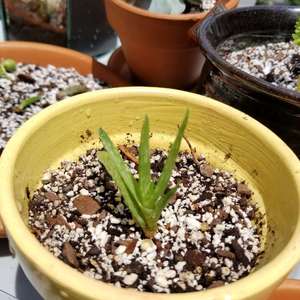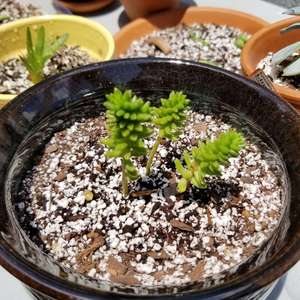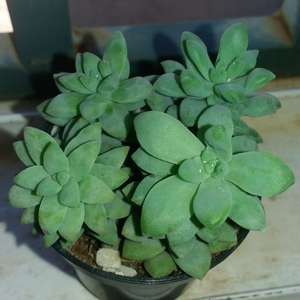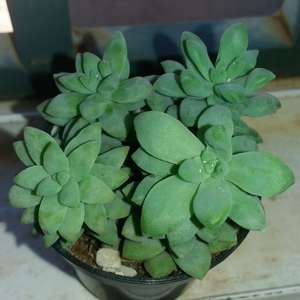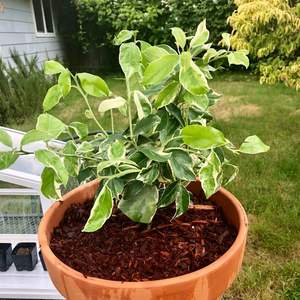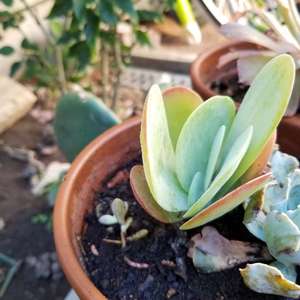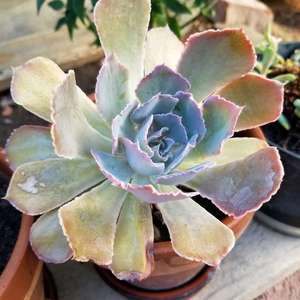成长记
Pommy Mommy
2018年06月20日

I now added "Watermelon (mystery plant FINALLY identified lol)" in my "garden"
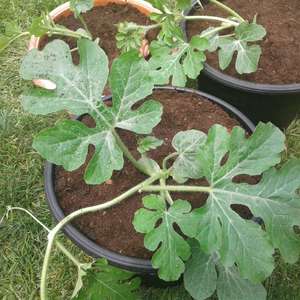

0
0
文章
Miss Chen
2018年06月20日

Soybean, lentil and pinto bean seeds grow rapidly, but the time it takes for a bean seed to germinate depends in part on where it sprouts. Germination of a seed in garden soil is measured from the day the seed is planted until just before its first shoot emerges above the soil. Germination outside the soil in a sprouting jar or other container usually is much shorter. Sometimes this is done as part of a science project or to produce edible sprouts.

Soybeans
Soybeans are a good model for a science germination experiment, because they sprout in three to four days in petri dishes, according to the Science Project Lab website. But Michigan State University notes that germination in the soil takes six to 14 days. Cold and excess or inadequate moisture are among the conditions that can slow germination outdoors. Living Gently Quarterly notes that soybean sprouts are becoming more common in cooking. But it warns not to sprout commercial seeds intended for planting, because they are chemically treated.
Lentils
The Sprout People website says it takes two to three days to germinate lentil seeds in sprouters, which are typically lidded containers with holes for air circulation. If growing in the garden, lentil seeds germinate in about 10 days at 68 degrees Fahrenheit, according to the Harvest to Table website. They are hardy annuals and members of the pea family. Sprouting any bean seed involves a process of soaking and regularly rinsing the seeds until they germinate in a sprouter that is kept out of direct sunlight and stored at 70 degrees Fahrenheit. Lentil sprouts can be eaten raw or cooked.

Pinto Beans
In soil, pinto beans germinate in four to eight days, according to the Texas A&M University Extension. But Sprout People says that when germinated in a sprouter, the process only takes 2 to 4 days. Unlike soybean and lentil sprouts, pinto bean sprouts are not edible unless cooked. Sprout People says they add a "delicate sweetness" to soup and that the process of sprouting alleviates some of the gaseousness associated with beans.

Soybeans
Soybeans are a good model for a science germination experiment, because they sprout in three to four days in petri dishes, according to the Science Project Lab website. But Michigan State University notes that germination in the soil takes six to 14 days. Cold and excess or inadequate moisture are among the conditions that can slow germination outdoors. Living Gently Quarterly notes that soybean sprouts are becoming more common in cooking. But it warns not to sprout commercial seeds intended for planting, because they are chemically treated.
Lentils
The Sprout People website says it takes two to three days to germinate lentil seeds in sprouters, which are typically lidded containers with holes for air circulation. If growing in the garden, lentil seeds germinate in about 10 days at 68 degrees Fahrenheit, according to the Harvest to Table website. They are hardy annuals and members of the pea family. Sprouting any bean seed involves a process of soaking and regularly rinsing the seeds until they germinate in a sprouter that is kept out of direct sunlight and stored at 70 degrees Fahrenheit. Lentil sprouts can be eaten raw or cooked.

Pinto Beans
In soil, pinto beans germinate in four to eight days, according to the Texas A&M University Extension. But Sprout People says that when germinated in a sprouter, the process only takes 2 to 4 days. Unlike soybean and lentil sprouts, pinto bean sprouts are not edible unless cooked. Sprout People says they add a "delicate sweetness" to soup and that the process of sprouting alleviates some of the gaseousness associated with beans.
0
0
文章
Miss Chen
2018年06月19日

Asparagus is a perennial vegetable plant that can be a long-lasting, permanent addition to a home garden. This vegetable requires well-draining soil to thrive, as waterlogged soil causes root rot. Growing asparagus in raised beds offers them proper drainage and an easier planting bed that doesn't require deep tilling.

Preparing a Raised Bed
Prepare the raised bed before the last frost of the season ends. Though asparagus can tolerate some light shade, it's best to locate the raised bed in an area that gets six to eight hours of sunlight each day. Raise the bed to at least 12 inches in height to accommodate drainage and growth.
Use a good-quality topsoil that is blended with compost or other organic matter such as manure or peat moss. Laying black plastic over the entire raised bed helps to retain heat within the soil for an early spring planting.
Remove the black plastic when there's no more danger of frost and dig trenches six inches deep and five feet apart with a garden trowel. In each trench, sprinkle one pound of triple superphosphate (0-46-0) for every 50 feet of soil.
Planting Asparagus
Purchase 1-year-old asparagus crowns. For the best harvest, ensure the asparagus crowns are healthy and male. Female asparagus use too much energy on producing seeds, leaving a less-than-desirable crop production. To tell the difference, look at the seeds and size of each plant. The female asparagus plant bears berry-like seeds, while the male produces thicker spears and larger flowers. Soak the asparagus crowns in a bucket filled with warm water for one hour before planting.
Plant the asparagus crowns into the trenches, about 12 inches apart, and cover with dirt. Water the plantings until the soil is moist, taking care not to saturate. Continue to water the crop once or twice per week to keep the soil moist.
Spread two to three inches of peat moss throughout the asparagus bed when the tips begin to emerge from the soil, usually in one to two weeks. This will help the soil to retain more moisture and will act as a weed barrier within the raised bed.

Keep the asparagus bed free of weeds, pulling them out regularly by hand. A weedy bed means both weeds and vegetables are competing for the same nutrients and water and can cause a weak crop for future growing seasons.
Harvesting Asparagus
Leave the asparagus crowns to grow tall and ferny their first growing season within the raised bed. This first season will provide the asparagus crowns the energy they need to grow a more productive harvest in the years to come.
Harvest a few asparagus spears when the plants are in their second growing season and reach heights of seven to nine inches tall. Cut the spears off the plant at soil level with a sharp knife. Leave half of the asparagus spears on the plant to provide energy for the third season's crop.

Preparing a Raised Bed
Prepare the raised bed before the last frost of the season ends. Though asparagus can tolerate some light shade, it's best to locate the raised bed in an area that gets six to eight hours of sunlight each day. Raise the bed to at least 12 inches in height to accommodate drainage and growth.
Use a good-quality topsoil that is blended with compost or other organic matter such as manure or peat moss. Laying black plastic over the entire raised bed helps to retain heat within the soil for an early spring planting.
Remove the black plastic when there's no more danger of frost and dig trenches six inches deep and five feet apart with a garden trowel. In each trench, sprinkle one pound of triple superphosphate (0-46-0) for every 50 feet of soil.
Planting Asparagus
Purchase 1-year-old asparagus crowns. For the best harvest, ensure the asparagus crowns are healthy and male. Female asparagus use too much energy on producing seeds, leaving a less-than-desirable crop production. To tell the difference, look at the seeds and size of each plant. The female asparagus plant bears berry-like seeds, while the male produces thicker spears and larger flowers. Soak the asparagus crowns in a bucket filled with warm water for one hour before planting.
Plant the asparagus crowns into the trenches, about 12 inches apart, and cover with dirt. Water the plantings until the soil is moist, taking care not to saturate. Continue to water the crop once or twice per week to keep the soil moist.
Spread two to three inches of peat moss throughout the asparagus bed when the tips begin to emerge from the soil, usually in one to two weeks. This will help the soil to retain more moisture and will act as a weed barrier within the raised bed.

Keep the asparagus bed free of weeds, pulling them out regularly by hand. A weedy bed means both weeds and vegetables are competing for the same nutrients and water and can cause a weak crop for future growing seasons.
Harvesting Asparagus
Leave the asparagus crowns to grow tall and ferny their first growing season within the raised bed. This first season will provide the asparagus crowns the energy they need to grow a more productive harvest in the years to come.
Harvest a few asparagus spears when the plants are in their second growing season and reach heights of seven to nine inches tall. Cut the spears off the plant at soil level with a sharp knife. Leave half of the asparagus spears on the plant to provide energy for the third season's crop.
0
0
文章
Miss Chen
2018年06月19日

Determining the best time to plant your vegetable garden in Kentucky involves more than looking at the calendar. To find the best planting date for each crop, you'll have to take into account your location within the state, the particular vegetables you're planting and when you want to harvest them.

Last Freeze Dates
Learn the typical date of the spring's last freeze so you can avoid the danger of setting out freeze- and frost-sensitive plants too early. The date of the last freeze varies from year to year, of course, but knowledge of typical freeze-free dates can help you reduce the risk of planting too early.
In western Kentucky, the average date of the last freeze comes relatively early; in Paducah, the median date of the last freeze is April 8. In central Kentucky, the last freeze comes somewhat later; the median last freeze in Lexington comes on April 18. In western Kentucky, freezes tend to occur even later; the median last freeze date in Ashland is May 4.
Soil Conditions and Temperatures
You can plant cool-season crops in the spring as soon as the soil is workable, meaning the ground is no longer frozen and the soil can be tilled. The soil should also not be so wet that it forms clumps when it's tilled or compressed in your fist.
Early crops should also be planted when the air temperature is relatively cool -- between 50 and 65 degrees Fahrenheit, so the plants have time to develop before the heat of late spring and summer begins.
Cool-Season Crops
Cool-season crops are not vulnerable to damage from frost, and they can be planted in Kentucky even before the danger of spring frosts has passed. Cool-season crops include broccoli (Brassica oleracea (Italica group)), cabbage (Brassica oleracea (Capitata group)), lettuce (Lactuca sativa) and onions (Allium cepa).

On average, the earliest planting date for cabbage and lettuce is March 15 in western Kentucky, March 25 in central Kentucky, April 1 in eastern Kentucky. The earliest planting date for broccoli plants is March 30 in the west, April 5 in the central part of the state, April 10 in the east. Onion sets can be planted as early as March 1 in the west, March 10 in central Kentucky and March 15 in the east.
Warm-Season Crops
Warm-season crops will be injured by frost, so they can't be planted until after frost danger has passed in the spring. Warm-season crops include tomatoes (Lycopersicon esculentum), cucumbers (Cucumis sativus), peppers (Capsicum annuum) and summer squash (Cucurbita pepo).
The earliest safe planting date for tomato plants is April 20 in western Kentucky, May 5 in central Kentucky and May 15 in eastern Kentucky. The earliest planting date for cucumbers is April 20 in the west, May 1 in the central part of the state, May 10 in the east. Pepper plants can be planted around May 1 in the west, May 10 in central Kentucky, May 20 in the east. Summer squash safe-planting dates are April 20 in the west, May 10 in the central region, May 15 in the east.
Fall Crops
A second planting of cool-season crops during the summer will allow you to take advantage of the cooler weather of the late season to produce a fall harvest. Planting should be timed so that the young plants are not subjected to the hottest summer temperatures, but so they have enough time to mature before hard freezes in the late fall.
Plant cabbage, for example, by July 1 in western Kentucky, July 15 in central Kentucky and August 1 in eastern Kentucky. Plant lettuce by August 1 in the west, August 15 in the central region and September 1 in the east.

Last Freeze Dates
Learn the typical date of the spring's last freeze so you can avoid the danger of setting out freeze- and frost-sensitive plants too early. The date of the last freeze varies from year to year, of course, but knowledge of typical freeze-free dates can help you reduce the risk of planting too early.
In western Kentucky, the average date of the last freeze comes relatively early; in Paducah, the median date of the last freeze is April 8. In central Kentucky, the last freeze comes somewhat later; the median last freeze in Lexington comes on April 18. In western Kentucky, freezes tend to occur even later; the median last freeze date in Ashland is May 4.
Soil Conditions and Temperatures
You can plant cool-season crops in the spring as soon as the soil is workable, meaning the ground is no longer frozen and the soil can be tilled. The soil should also not be so wet that it forms clumps when it's tilled or compressed in your fist.
Early crops should also be planted when the air temperature is relatively cool -- between 50 and 65 degrees Fahrenheit, so the plants have time to develop before the heat of late spring and summer begins.
Cool-Season Crops
Cool-season crops are not vulnerable to damage from frost, and they can be planted in Kentucky even before the danger of spring frosts has passed. Cool-season crops include broccoli (Brassica oleracea (Italica group)), cabbage (Brassica oleracea (Capitata group)), lettuce (Lactuca sativa) and onions (Allium cepa).

On average, the earliest planting date for cabbage and lettuce is March 15 in western Kentucky, March 25 in central Kentucky, April 1 in eastern Kentucky. The earliest planting date for broccoli plants is March 30 in the west, April 5 in the central part of the state, April 10 in the east. Onion sets can be planted as early as March 1 in the west, March 10 in central Kentucky and March 15 in the east.
Warm-Season Crops
Warm-season crops will be injured by frost, so they can't be planted until after frost danger has passed in the spring. Warm-season crops include tomatoes (Lycopersicon esculentum), cucumbers (Cucumis sativus), peppers (Capsicum annuum) and summer squash (Cucurbita pepo).
The earliest safe planting date for tomato plants is April 20 in western Kentucky, May 5 in central Kentucky and May 15 in eastern Kentucky. The earliest planting date for cucumbers is April 20 in the west, May 1 in the central part of the state, May 10 in the east. Pepper plants can be planted around May 1 in the west, May 10 in central Kentucky, May 20 in the east. Summer squash safe-planting dates are April 20 in the west, May 10 in the central region, May 15 in the east.
Fall Crops
A second planting of cool-season crops during the summer will allow you to take advantage of the cooler weather of the late season to produce a fall harvest. Planting should be timed so that the young plants are not subjected to the hottest summer temperatures, but so they have enough time to mature before hard freezes in the late fall.
Plant cabbage, for example, by July 1 in western Kentucky, July 15 in central Kentucky and August 1 in eastern Kentucky. Plant lettuce by August 1 in the west, August 15 in the central region and September 1 in the east.
0
0
文章
Miss Chen
2018年06月19日

Zucchini are summer garden favorites, growing quickly and easily and producing such abundant crops that they inspire the old joke that you'll run out of friends before you run out of extra zucchini. After you sow your zucchini seeds into your garden, you will watch the plant grow, emerging as a tiny seedling and, within a few months, sprawling as a long vine across your garden, producing flowers and, eventually, fruits.

Germination
Hold a zucchini seed in your hand and you are holding the raw materials for one of your garden's largest and most productive plants. The zucchini's life begins with germination, when soil temperatures warm to about 70 degrees Fahrenheit, causing the seed to absorb large quantities of water. Water triggers the embryo to begin growing, and soon, it exceeds the tight confines of the seed coat and bursts free. The root emerges first, correctly orienting and anchoring the seed in the soil. Next, the primitive leaves, called cotyledons, stretch upward, pushing aside the soil and reaching for the light.
Growth
Zucchini grow in two forms: bush, or determinate, and vining, or indeterminate. Growth from a tiny seedling into these large forms requires rapid mitosis, a process during which cells make an extra copy of their genetic material and split into two cells. Growth occurs in a part of the plant called the meristem, which you can find at the growing end of a zucchini vine, the tips of the roots and in the nodes, points along the stem that develop into leaves and flowers. The ability of the zucchini plant to produce so many different structures from a single type of cell allows the plant to grow rapidly, producing edible fruits within a matter of a few months.

Reproduction
During the final stage of the zucchini's life, it concentrates its energy on producing seeds to ensure the survival of the next generation. When the days lengthen in midsummer, meristems along the vine grow into flower buds. Zucchini, like all members of the squash family, produce male and female flowers separately on a single vine and rely on bees to carry pollen from male flowers to female flowers. Once pollination occurs, the pollen grows into a tube that enters the ovary of the female flower and deposits sperm cells where they can fertilize the egg within. Each ovule within the ovary develops into a separate seed, and the wall of the ovary thickens into a fleshy fruit coat, the tasty green fruit that you recognize as zucchini.

Germination
Hold a zucchini seed in your hand and you are holding the raw materials for one of your garden's largest and most productive plants. The zucchini's life begins with germination, when soil temperatures warm to about 70 degrees Fahrenheit, causing the seed to absorb large quantities of water. Water triggers the embryo to begin growing, and soon, it exceeds the tight confines of the seed coat and bursts free. The root emerges first, correctly orienting and anchoring the seed in the soil. Next, the primitive leaves, called cotyledons, stretch upward, pushing aside the soil and reaching for the light.
Growth
Zucchini grow in two forms: bush, or determinate, and vining, or indeterminate. Growth from a tiny seedling into these large forms requires rapid mitosis, a process during which cells make an extra copy of their genetic material and split into two cells. Growth occurs in a part of the plant called the meristem, which you can find at the growing end of a zucchini vine, the tips of the roots and in the nodes, points along the stem that develop into leaves and flowers. The ability of the zucchini plant to produce so many different structures from a single type of cell allows the plant to grow rapidly, producing edible fruits within a matter of a few months.

Reproduction
During the final stage of the zucchini's life, it concentrates its energy on producing seeds to ensure the survival of the next generation. When the days lengthen in midsummer, meristems along the vine grow into flower buds. Zucchini, like all members of the squash family, produce male and female flowers separately on a single vine and rely on bees to carry pollen from male flowers to female flowers. Once pollination occurs, the pollen grows into a tube that enters the ovary of the female flower and deposits sperm cells where they can fertilize the egg within. Each ovule within the ovary develops into a separate seed, and the wall of the ovary thickens into a fleshy fruit coat, the tasty green fruit that you recognize as zucchini.
0
0



